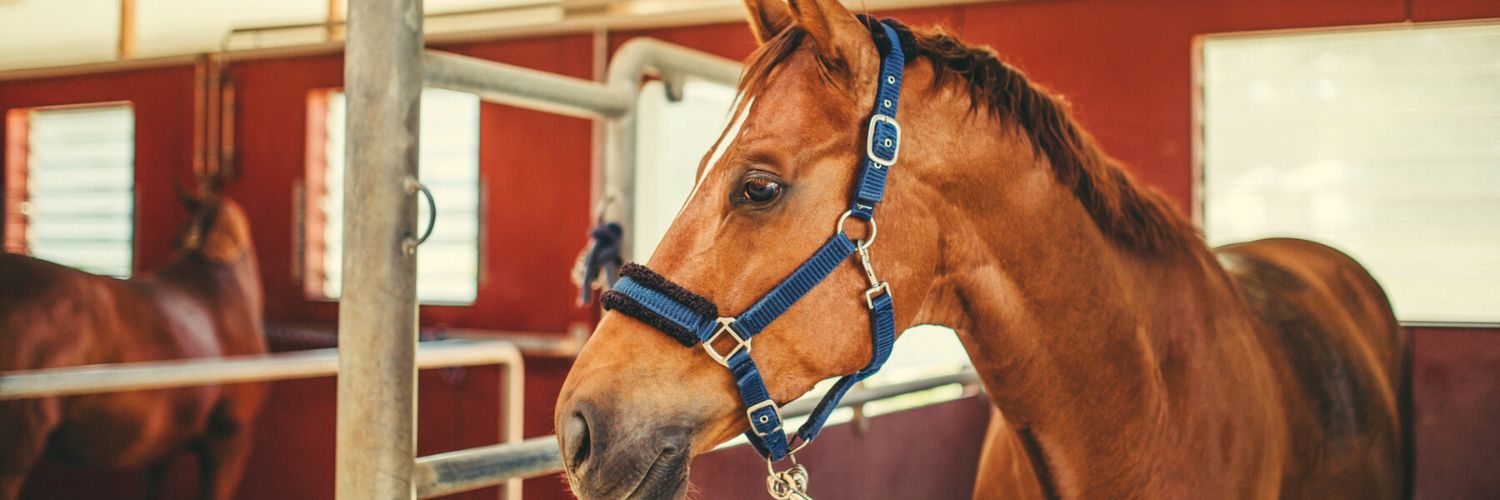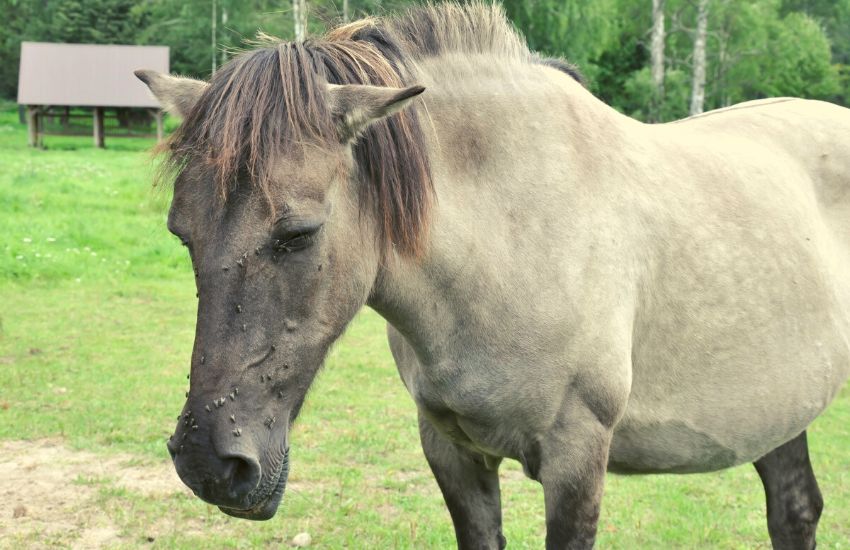shelter pets in need
Each order helps pets in need

The Big Head disease in horses (or swollen face disease) is very underreported because of its rareness, but it's no less dangerous for being so. Learn more about how calcium deficiency and phosphorus can lead to nutritional secondary hyperparathyroidism, and how to prevent it with proper diet and other measures.
Horses tend to be less prone to disease when compared with other domestic animals, such as the clear majority of dog breeds, as proven by various canine lifetime health studies. Besides the normal bumps and bruises, and less normal disorders such as colic and founder, there are also rare diseases that affect less than 20% of the worldwide equine population.
Once such serious disorder is commonly known as "Horse Big Head Disease," or nutritional secondary hyperparathyroidism (often shortened to NSHPT.) Other names for this disorder include "equine osteoporosis" or "bran disease."
Horse Big Head Disease is an uncommon disorder of the endocrine system</a>. It is caused by a diet too high in phosphorus and/or too low in calcium. One or both problems can lead to hypocalcemia and then raise parathyroid hormones in a
As a direct result, their body can no longer make Vitamin D. The lack of Vitamin D causes spontaneous fractures in the bones of the head, legs, and/or rib cage, airway obstructions, and eventually paralysis and death.
Signs of horse big head disease may begin with a loss of condition, such as rapid weight loss and a dull coat, even when it seems the animal is being fed a proper diet. The horse may have noisy breathing and may have loose or already missing teeth.
Lameness that shifts from one leg to another, lameness that appears one day and is gone the next, and a stiff gait should all be warning signs that something is "off." Lastly, any horse that suddenly develops facial swelling, such as around the eyes or if the jaw swells, should be immediately checked by the vet.

How does a horse contract this disease? As mentioned earlier, it stems from a diet too high in phosphorus and lacking in calcium. One certain way that horses contract the disease is by grazing on one of several types of grass that are high in chemicals known as oxalates.
Oxalates prevent the body from properly using calcium, effectively leaching the necessary mineral from the bloodstream. Over time, the body begins trying to take the calcium it needs back from the bones, creating a vicious cycle whereby the bones are weakened and ultimately fracture. This is very close to the results of human osteoporosis.
Oxalates are found in many grass species around the world. Most are known as invasive species, and some are grown as ornamental; a few are even dried and used for decoration around the home.
Several species of grasses best avoided by horses are: Digitgrass (Digitaria eriantha,) Buffalograss (Panicum maximum,) Kikiyu (Pennisetum clandestinum,) Buffelgrass (P. ciliare), and Foxtail (genus Setaria.)
Horses that are only moderately affected by the disease are treated with non-steroidal anti-inflammatory drugs for pain. If a horse contracts this disorder and survives, it will take up to 12 months for them to be healthy again; it cannot be ridden during the healing period.
Any mare being diagnosed with NSHPT should not be bred under any circumstance, as the calcium which pregnant horses require for the growing fetus and her own body would likely kill her very quickly.
Besides avoiding grasses high in oxalates, horse owners should keep their equines away from pastures that have been treated with fertilizers high in phosphorus, such as what is found in chicken manure.
Bran should only be used sparingly in the diet, and any grains should be carefully monitored. Many commercially-produced grains tend to be very high in phosphorus.
In most places around the globe, preventing horse big head disease is as simple as adding supplements to the
A reasonable estimate of how much calcium to phosphorus a healthy horse needs in its diet are about 1.2 parts of calcium to 1 part of phosphorus. In a situation where the local grazing is particularly questionable, that ratio may be raised to 2.5 to 3 parts calcium to 1 part phosphorus.
It must be noted that if a person believes their horse may have contracted NSHPT, they should have the vet out to do a panel of tests to ensure a proper diagnosis of the disorder. Those tests will include X-rays, bloodwork, urine, or fecal tests.

If a person suspects that their horse has contracted big head disease, their first reaction should be to not panic. Keep the horse calm and comfortable with clean water and alfalfa hay.
The vet should be called and the necessary tests performed in a reasonable amount of time as he or she is the first and last expert on the situation. If caught early, the disorder can be reversed with the methods outlined here.
With a bit of knowledge of the local grasses in the region where horses are kept and daily scrutiny of a
Cushing's disease, also known as pituitary pars intermedia dysfunction (PPID), is a very serious condition in horses. If left untreated, it can lead to life-threatening health issues and a poor quality of life
Big head disease, also known as osteodystrophia fibrosa, is caused by a calcium deficiency. Pet disaster preparedness can reduce the chances of this developing, and as such the following steps are recommended:
Feed a balanced diet with proper calcium and phosphorus levels. The ideal Ca:P ratio for most adult horses is between 1:1 to 2:1.
Provide a calcium supplement if your
Limit oxalate-rich plants like spinach, beet greens, and Swiss chard, which can inhibit calcium absorption.
Ensure your horse has access to salt blocks or loose salt. Sodium is essential for calcium absorption and utilization in the body.
Have your vet check blood calcium levels, especially for horses kept on sparse pastures. Hypocalcemia can develop even when a horse looks otherwise healthy.
As mentioned previously, calcium deficiency and too much phosphorus causes this condition to develop.
Comments
Leave a comment